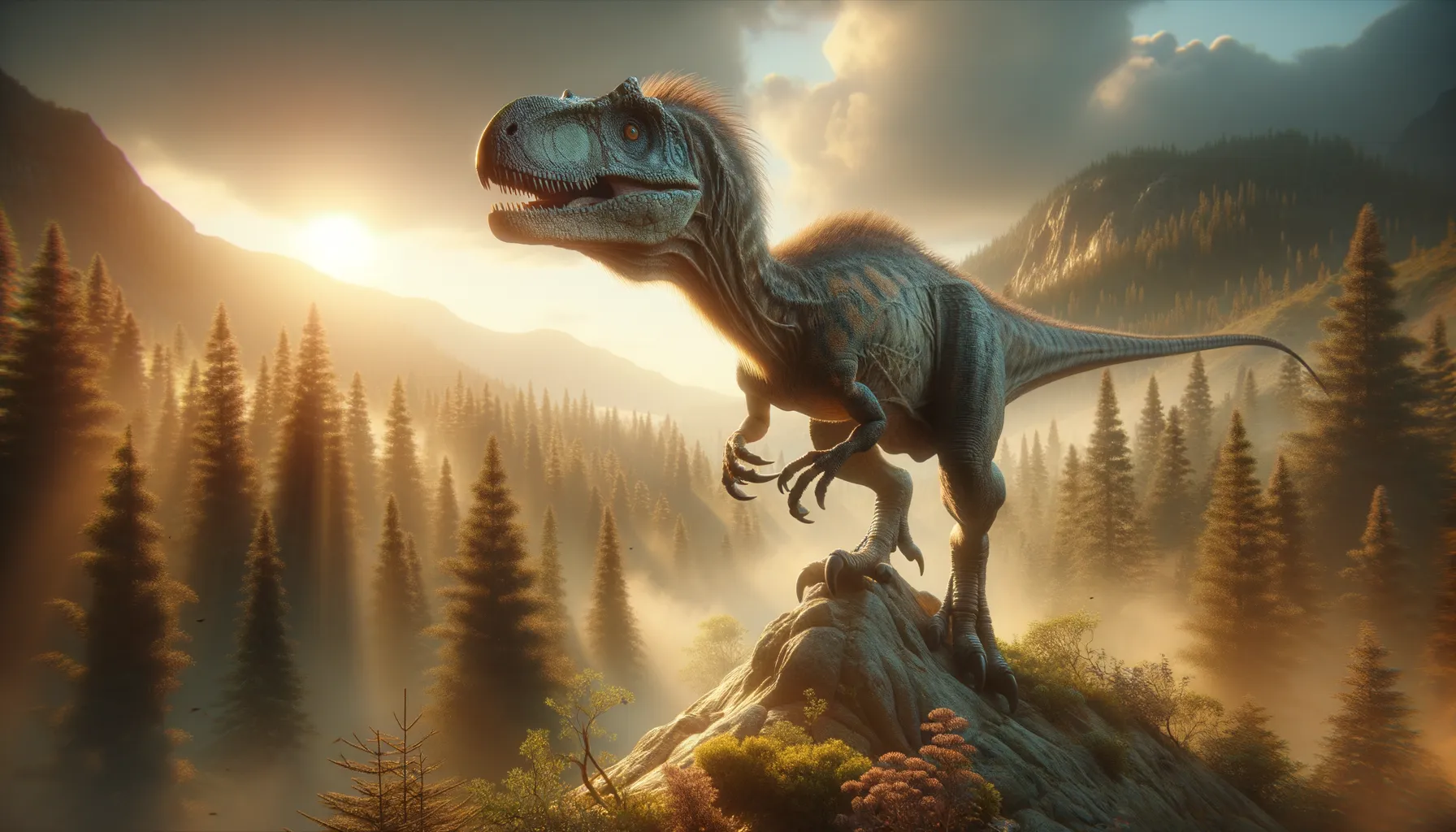
Boreonykus
Swift predator of ancient northern lands.
Period
Cretaceous
Length
Roughly 2 meters long.
Height
About 1 meter tall.
Weight
Approximately 25 kilograms.
Boreonykus was a small, agile, meat-eating dinosaur that lived during the late Cretaceous period. Its remains were unearthed in the western part of North America. This dinosaur was part of the dromaeosaurid family, which are often likened to modern birds of prey due to their swift movements and hunting prowess. Its discovery has provided significant insights into the diversity and distribution of small theropods in its era.
Diet
Boreonykus was a carnivore, feeding primarily on small mammals and other dinosaurs. Its sharp teeth and claws suggest it was well-equipped to tear into flesh.
Hunting
This dinosaur used its speed and cunning to ambush prey, employing surprise over brute force. Cooperation in hunting is not definitively known but not impossible for such a species.
Environmental challenges
Boreonykus faced competition for food with other carnivorous species of its time. Climate fluctuations and environmental changes would have tested its adaptability. Periodic habitat changes required Boreonykus to adjust its hunting tactics and territorial movements.
Speed
Moderate, with quick bursts for catching prey.
Lifespan
Estimated around 20 to 25 years.
First discovery
Discovered in 2015 in Alberta, Canada.
Fun Facts
- Boreonykus was a small theropod dinosaur that lived around 70 million years ago during the Late Cretaceous period.
- The name 'Boreonykus' means 'northern claw,' highlighting its discovery in northern regions and its clawed features.
- Fossils of Boreonykus have been found in what is now Alberta, Canada, making it part of the rich dinosaur heritage of the region.
- This dinosaur is believed to have been a carnivore, likely preying on small animals and possibly scavenging when necessary.
- Boreonykus was potentially covered in feathers, similar to many other theropods, which gives clues about its connection to modern birds.
- Despite its predatory nature, Boreonykus was relatively small, estimated to be up to two meters long, around the size of a modern-day turkey.
- As a member of the dromaeosaurid family, Boreonykus was related to the more famous Velociraptor, sharing some similar features like a sickle-shaped claw.
Growth and Development
Juvenile Boreonykus likely stayed with parents until they could hunt independently. Their growth rate was swift to ensure survival in a predator-rich environment. Physical development included strengthening of limb muscles to aid in their pursuit of prey.
Habitat
This dinosaur roamed forested areas with abundant undergrowth, providing cover for ambushing prey. Rivers and lakes in its habitat supported a broad ecosystem. Seasonal changes could affect its food sources and territory range.
Interaction with other species
Boreonykus likely competed with other small to medium-sized predatory dinosaurs for resources. It might have avoided larger predators by utilizing its speed and agility. Evidence suggests some degree of interaction with herbivorous dinosaurs, primarily as predators and prey.
Natural lifespan
Lived naturally around 20-25 years barring predation.
Reproduction
Boreonykus likely laid eggs, as many theropods did. Nesting sites were probably located in secluded, safe areas to protect from predators. Hatchlings were miniature versions of adults, growing rapidly during early life stages.
Social behaviour
These dinosaurs may have been solitary hunters, but small group activity for feeding or protection isn't excluded. Interactions might have included complex vocalizations or displays to communicate or assert dominance.
Fossil locations
Fossils of Boreonykus have been primarily found in the Wapiti Formation in Alberta, highlighting its presence in what is now North America. This area is known for a plethora of other dinosaur discoveries, offering significant comparative insights.
